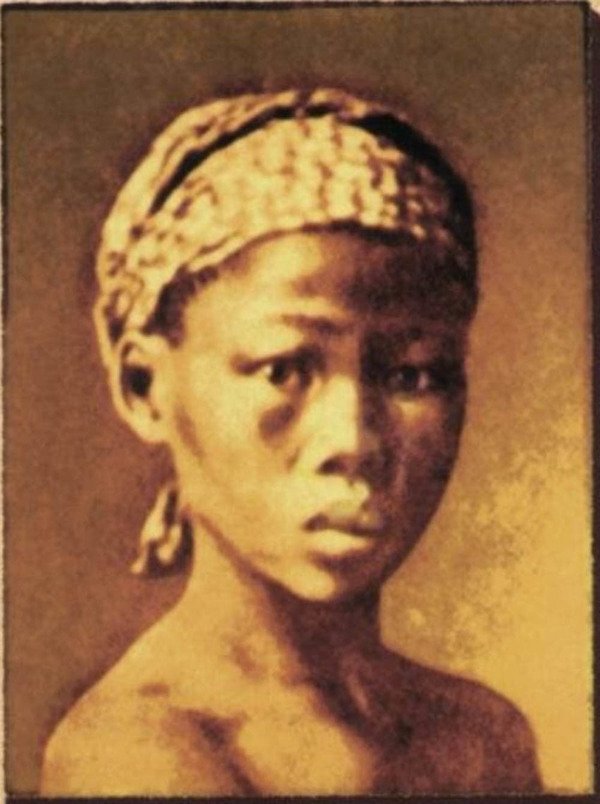SOUTH AFRICAN HISTORY: Krotoa, the bridge between European and African culture
This article covers the period from 1643 to 1674 in the Cape of Good Hope.
Krotoa was the niece of Autshumato, the Goringhaicona chief who met Jan van Riebeeck on his arrival in the Cape of Good Hope in 1652.

Krotoa was born 1643 and lived with her uncle, Autshumato because of her consistent hostility towards her mother’s tribes – the Goringhaiqua.
Due to Autshumato’s early contact with the European sailors and the role of postmaster he played while living on Robben Island before 1652, it can be assumed that Krotoa had some knowledge about the Dutch culture when Van Riebeeck arrived in the Cape.
In 1653, about a year after Van Riebeeck’s landing, when she started working as a servant in Van Riebeeck’s household - she was about ten years old. Her service was to look after the sick child of Willem Barensteen Wijlant the chaplain/sick-healer in the fort. It is not clear how she came into the service of Van Riebeeck, but it can be assumed that the employment of Krotoa came through her uncle Autshumato as he was the only contact Van Riebeeck had with the local Khoikhoi tribes.
Van Riebeeck first mentioned her in his diary in January 1654.
During her stay in the Van Riebeeck household, she learnt to speak Dutch and Portuguese and respond positively to the Christian education they provided her.
It can be said that during the 1650’s Krotoa possessed an intimate knowledge of both Khoikhoi and Dutch culture.
She was known to move between the fort and her tribe’s kraal while changing clothes in between. Van Riebeeck never feared that she would not return to his household as she became too customed to the luxuries of the Dutch culture. Also, Nommoa observed this after his return to the Cape in 1658 and accused her of betrayal.
Her influence on the Dutch was seen from an early stage.
Just after she joined the Van Riebeeck household in 1653, her uncle Autshumato was sentenced to death for killing the cattle herder David Jansz. With Krotoa intervention Autshumato life was spared and he was only banished to Robben Island from where he escaped two years later.
On 21 June 1658, Van Riebeeck received a complaint from Jan Reijnierssen, a Vry Burger, about runaway slaves.
After consulting with Nommoa who claim to have no knowledge of the incident, it was Krotoa he turned to for an honest answer.
She informed him that Nommoa was dangerous and that the slaves hide with the Khoikhoi tribes. Based on this knowledge Van Riebeeck captured Autshumato again and hold him as a hostage to convince the Khoikhoi tribes to hand over the slaves. It only resulted in Autshumato to be banished to Robben Island for the second time.
On 3 May 1662 (the same year Van Riebeeck left the Cape) Krotoa was baptised and receive the name, Eva. She became the first indigenous Southern African to be baptised a Christian.
Two years later on 26 April or 2 June (sources differ on this date) 1664 she married the Danish surgeon, Peter Havgard whom the Dutch called Pieter van Meerhof. Krotoa was now known as Eva van Meerhof. The following year, in 1665, her husband was appointed the superintendent of Robben Island, and the couple moved there. Three years later in May 1665 he was killed in an expedition in Madagascar and Krotoa and her children had to move back to the mainland on 30 September of the same year.
She was allowed to stay at the fort as a guest of the Commander.
At first, she remained a respectable member of European society, but soon started to drink heavily and turned to prostitution.
Her drunken behaviour at the table of the Commander in February 1669 as well as her increasing bitterness against the settlers, prompted a warning to correct her ways, or she would be banished. Krotoa reacted to this warning by abandoning her children in an attempt to run away but was soon captured and taken back to the fort for imprisonment.
In March that same year she was banished to Robben Island for immoral behaviour where she stayed until her death on 29 July 1674. She received a Christian burial from the church in the new castle.
Sources:
https://en.wikipedia.org/wiki/Krotoa
http://www.sahistory.org.za/people/krotoa-eva
http://mg.co.za/article/2016-09-05-00-the-history-of-van-riebeeks-slave-krotoa-unearthed-from-the-slave-masters-view
https://chnm.gmu.edu/wwh/modules/lesson7/pdfs/primarysourcepacket.pdf